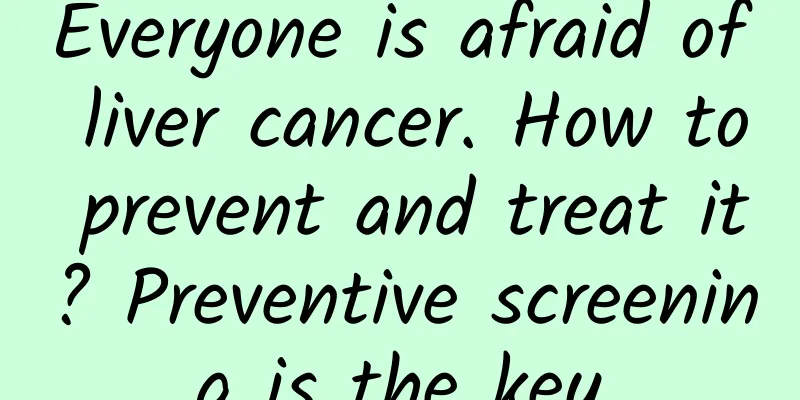Are you still afraid of chickens in your 30s? This is not hypocrisy

|
Audit expert: Yin Tielun Deputy Chief Physician, Department of Neurology, Airport Branch, Peking University Third Hospital "Haha, you're actually afraid of chickens!" Shh! Don't laugh, some people are really scared to tears by chickens! Many people like to "eat chicken" (game term), but they are extremely afraid every time they see poultry and birds such as chickens. In fact, this is a kind of phobia, known as "avian phobia." Source: Screenshot of the variety show "Longing for Life" What is aviophobia? Ornithophobia, also known as "bird phobia", is a special and irrational fear of birds. In DSM-5 (The diagnostic and statistical manual of mental disorders), ornithophobia is classified as a specific phobia. Source: Stills from The Big Bang Theory The main characteristics of avian phobia are: When the feared object or its main features, such as the beak, claws, head and other key parts, appear, the patient will experience a strong sense of fear and loss of emotional control, which will bring about a great stress response , such as palpitations, dizziness, nausea, shortness of breath and other symptoms. In severe cases, it may be life-threatening. It usually occurs in early childhood. If it persists into adulthood, it is unlikely to remit or recover on its own. When conditions permit, patients will choose to stay away from places where the feared object appears as much as possible. For example, patients with ornithophobia will subconsciously stay away from woods, grasslands and other areas, and this avoidance is continuous, usually lasting for 6 months or even longer. Where does fear come from? If we were chased or pecked by birds when we were young, it may have left a certain shadow in our hearts; or if we saw others being hurt by birds, we may have empathy for them; if one of our parents is afraid of birds, we may also be influenced by them. Therefore, these negative emotions may be generated directly or indirectly, and do not necessarily have to be experienced personally. There are obvious differences in the extinction mechanism of short-term memory and long-term memory. The consolidation theory of memory holds that once a memory is acquired, it will enter a time-dependent process, and the memory will change from a short-term, unstable state to a long-term, permanent, stable existence. Memory is mainly stored in brain structures such as the cerebral cortex, cerebellum, hippocampus and amygdala. Hippocampus Source: Baidu Encyclopedia Back in 1935, scientists removed two-thirds of Henry Molaison's hippocampus to treat his epilepsy. The operation was successful, but after the operation, he would keep asking the nurse when lunch would be served. Henry Molaison's continued "amnesia" Source: BioExploration He read the same magazine over and over again, told a joke many times in a ten-minute conversation, and forgot everything he saw. After more than half a century of research, it was finally discovered that his memory impairment was related to the loss of the hippocampus. The amygdala is a key brain structure for the learning and storage of fear experiences. Neuroscientist Joseph LeDoux believes that the amygdala plays a role in fear memory similar to the role of the hippocampus in conscious memory. Although people can realize the harmlessness of chickens when talking to people with "chicken phobia" in the absence of a stimulus, when the stimulus of "chicken" appears in front of them, before the brain has time to rationally analyze it, the "chicken phobia" signal has already occupied the amygdala through the subcortical pathway. At the same time, another study showed that the formation of fear memory is more conducive to the stable storage of memory. The brain uses different encoding pathways to form different types of memories. For memories like fear that can cause psychological trauma, a simple and crude approach will be chosen - directly cutting off certain synapses in the cerebral cortex and generating new synapses in other areas. Source: Screenshot of pnas website Therefore, although we forget the memory of fear in the short term, once similar stimuli appear, the fear we experience will still be stimulated. The formation of this fear passes through the cortical pathway, without the participation of consciousness, so it is difficult to eliminate it by reasoning. The impact of phobia on life "What? You're afraid of chickens!" Source: Screenshot of the variety show "Real Men" Many people may not understand the pain of people with specific phobias. But in fact, for patients, the impact of this fear on their daily life cannot be underestimated. When patients are trapped in fear, the ensuing series of physical symptoms such as tremors, diarrhea and sweating will interrupt normal learning and work processes, and the impact of these symptoms is often overwhelming and difficult for individuals to control. Source: pexels In addition, once the patient develops a fear reaction associated with a specific object or situation, he or she will subconsciously take certain avoidance measures to reduce the frequency of encounters as much as possible. For example, people with acrophobia will avoid climbing high places, and people with claustrophobia will not put themselves in a confined space...For people with avian phobia, birds can be seen almost everywhere. In order to avoid contact, patients may choose to reduce going out or even not go out , which will have a great impact and disruption on the patients' normal life order. In addition, they may also face the possibility of "secondary harm". "People around me don't understand me at all, and they think I'm acting a bit pretentious when they see my actions" and "Some elders even think I'm spoiled." ... The lack of understanding from family and friends will, to a certain extent, aggravate the pain of patients. How to relieve phobias First, try to slow down and regulate your breathing . Notice: the whole process is done rhythmically! As you breathe, feel your presence. Source: Xigua Lab Then, try to relax your muscles . When we are in fear, our body muscles will unconsciously be in a tense state. By consciously relaxing the body, it can help relieve physical symptoms. Finally, distracting ourselves , such as communicating with family and friends, or looking at distant scenery, can help us relieve fear. Fear often comes from the constantly magnified suggestions in the heart, and this fear is actually out of touch with reality. In cognitive behavioral therapy, therapists will set up certain situations to help patients assess the possibility of danger, thereby reducing fear. So, before the fear comes, you can also try to ask yourself: Will this situation definitely happen? If it happens, what am I afraid of? … Source: Short video screenshot Of course, dear friends, please be more considerate of your friends who are afraid of chickens, because they are really afraid! |
<<: Cartoon | @Students, this summer safety guide "pats" you
>>: Come and learn! Doing these exercises more often can prevent cervical spondylosis
Recommend
Cooling down! Blizzard! Cold front is coming again
The cold air is coming again! November 19-22 Rain...
How to borrow money using social security card? Social Security Card Loan Process
How to borrow money using social security card? T...
Tonga's submarine volcano erupted and many countries issued tsunami warnings! Will it affect China?
The current situation in the South Pacific island...
3500 words in-depth analysis: community operation monetization
Community marketing is suitable for products with...
Is it reliable to use mobile phone software to repel mosquitoes?
Another summer is here, bringing with it scorchin...
What do girls use to solve physiological problems?
Whose cat doesn’t go into heat, and whose girl do...
Why was iPhone 4 abandoned?
Apple did not completely ignore the consumer deman...
Cooling spray has a bad temper and may be flammable and explosive!
Even though the beginning of autumn has passed, t...
New media operation tutorial: If you haven’t even come up with a good name, how can you expect users to pay attention to you?
As the saying goes: A name reflects a person'...
Insights on the major mobile advertising platforms in Q1 2019!
This article takes the five major mainstream plat...
How much does it cost to develop a seafood mini program in the Linzhi market?
In order to better penetrate into various industr...
International Polar Bear Day丨How can they survive in the gradually warming Arctic?
Today, February 27, is International Polar Bear D...
What is the investment price of Hulunbuir Home Decoration Mini Program? Hulunbeier home decoration mini program investment price inquiry
The advantages of WeChat mini program investment ...
What should we pay attention to when mining and deleting Baidu SEM keywords?
As for keyword expansion, generally speaking, by ...









